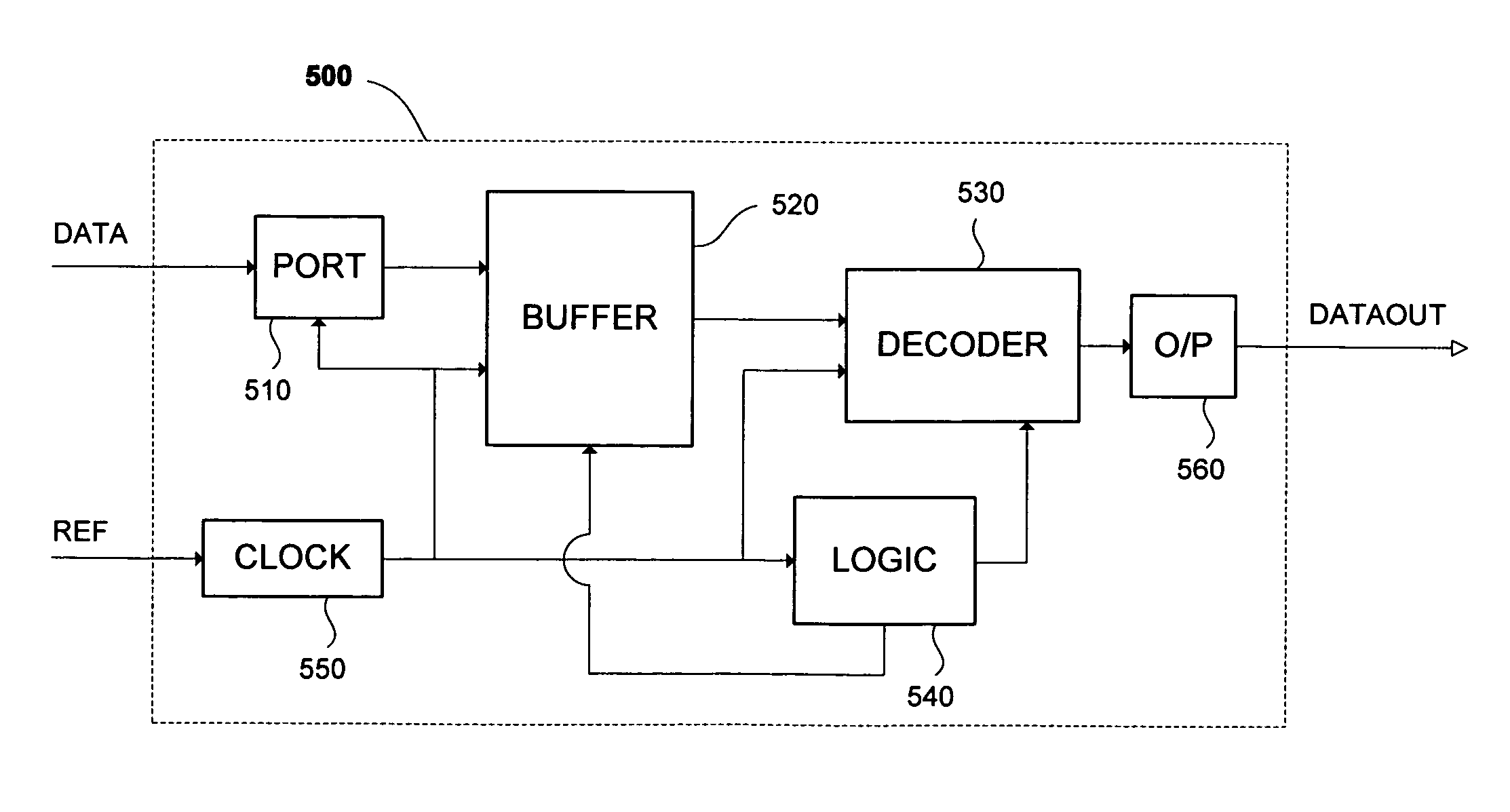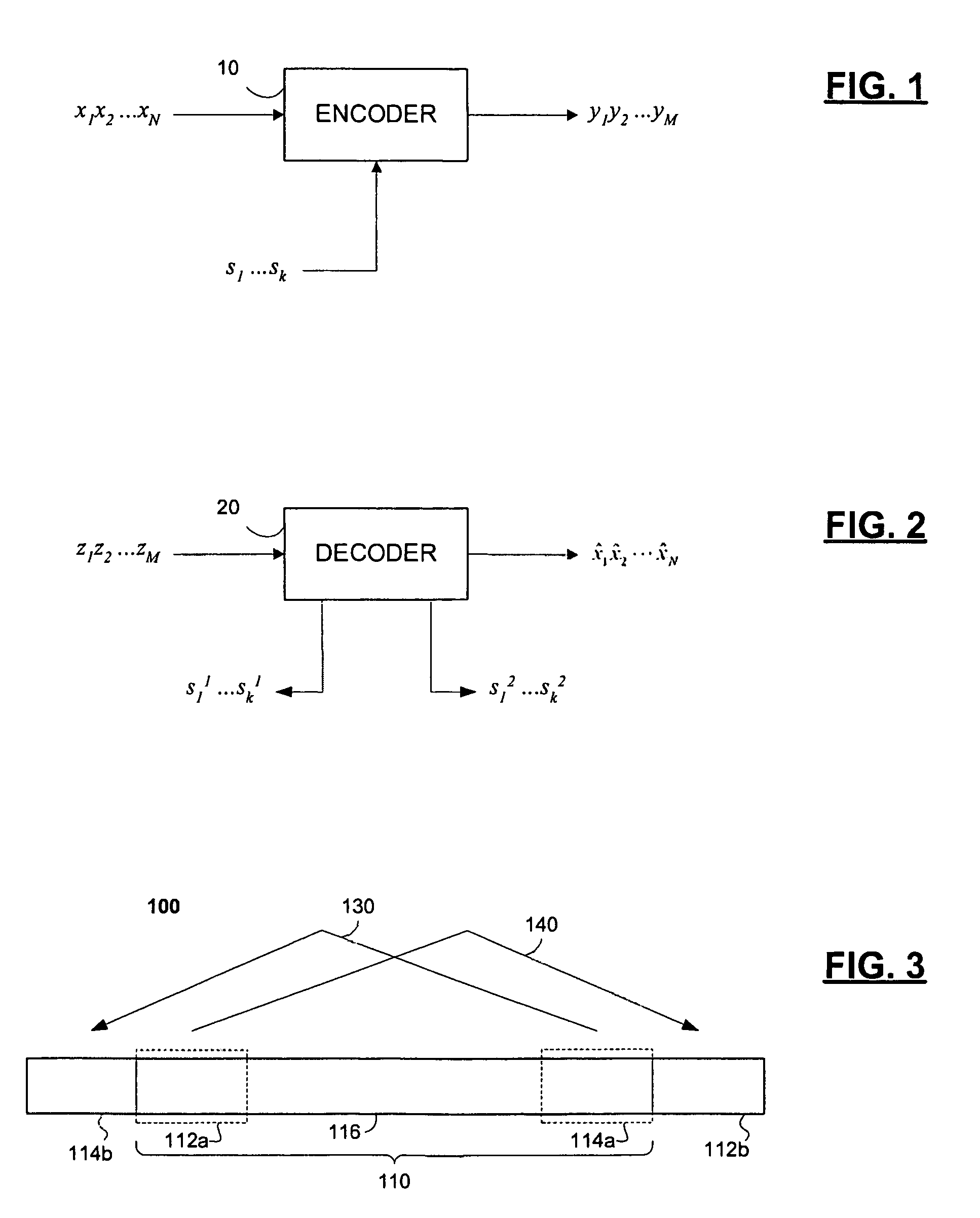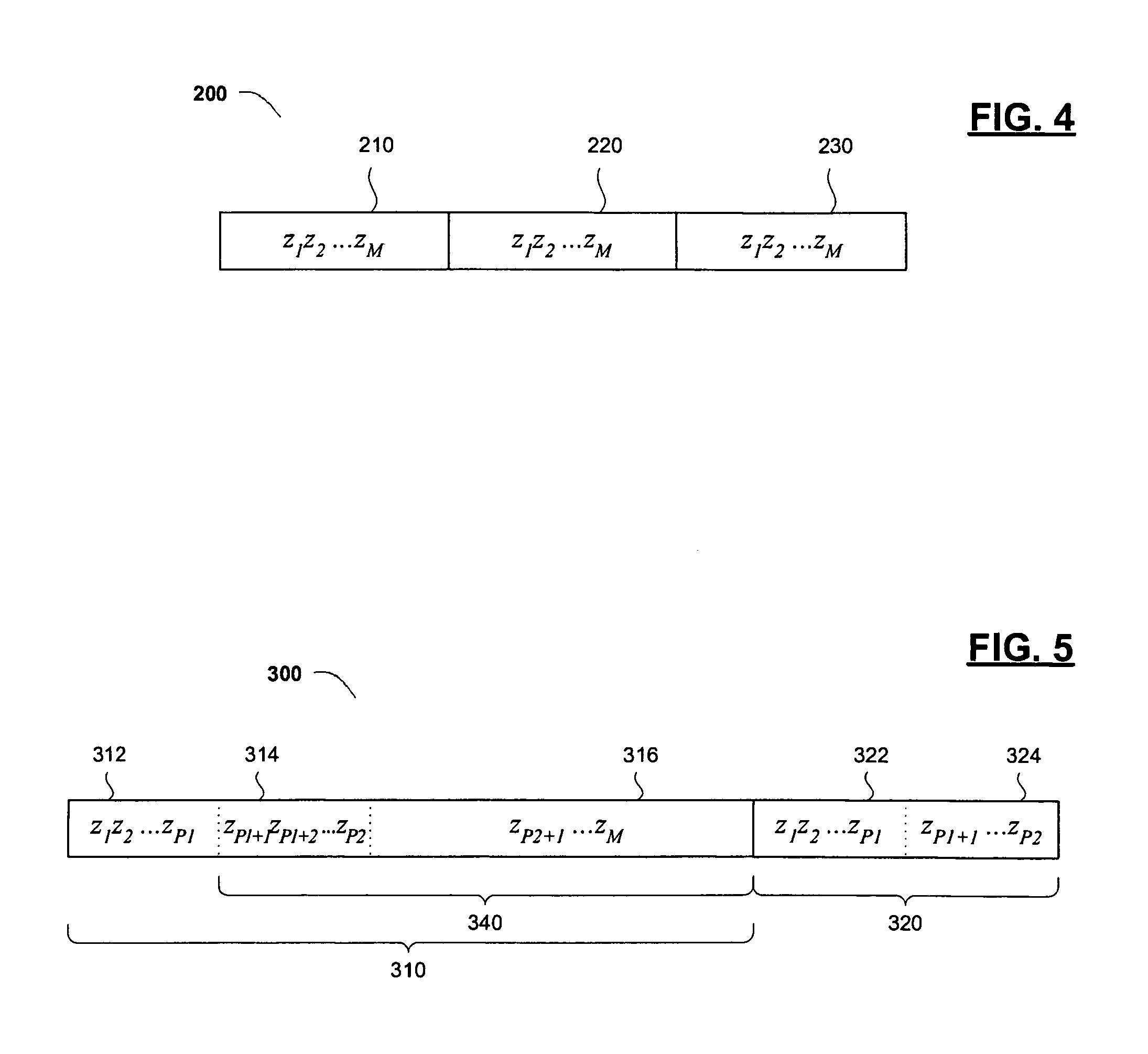Methods, algorithms, software, circuits, receivers and system for decoding convolutional code
a convolutional code and receiver technology, applied in the field of encoding and decoding information, can solve the problems of inability to achieve convergence, inability to know the starting and ending state of the convolutional decoder in the receiver, and inability to know so as to reduce the complexity of a suboptimal convolutional decoder, increase the reliability of the starting and ending state, and add any overhead to the transmitted data block.
- Summary
- Abstract
- Description
- Claims
- Application Information
AI Technical Summary
Benefits of technology
Problems solved by technology
Method used
Image
Examples
first embodiment
[0034]The present invention relates to methods of processing and / or determining a value for a serial data block. In a first embodiment, the method may comprise the steps of (a) appending an initial subblock of the serial data block to the serial data block; (b) prepending a terminal subblock of the serial data block to the serial data block; and (c) decoding the prepended terminal subblock, the serial data block, and the appended initial subblock to estimate a starting state, an ending state and a most likely sequence for the serial data block. Appending an initial subblock and prepending a terminal subblock to the serial data block reduces the complexity of the decoder and ensures smooth and / or continuous transitions at the beginning and end of the serial data block during decoding, without reducing or adversely affecting the reliability of the starting and ending state(s) or adding any overhead to the data block transmission. It is believed that the smooth decoding transitions res...
second embodiment
[0052]FIG. 4 shows an exemplary serial data block configuration 200 for processing convolutional code according to this second embodiment, generally comprising first (or “prepended”) code block 210, serial data block 220 (to be decoded and output as received serial data), and third / last (or “appended”) code block 230. Generally, the first code block 210 is received and stored in a buffer, and the stored data or code block is read three successive times to form serial data block configuration 200. Thus, the identity and / or sequence of first code block 210, serial data block 220, and last code block 230 are identical to one another (e.g., all consist of the sequence z1z2 . . . zM). This approach further simplifies the trellis decoder, because circuitry (such as pointer logic and / or extra memory) for indicating and / or storing appended and / or prepended code sequences is not necessary.
[0053]As described above for the first embodiment of the present method, Viterbi decoding the first code...
third embodiment
[0058]Viterbi decoding is also a preferred aspect of this For example, the step of estimating a starting state for the modified data block preferably comprises Viterbi decoding the initial portion and L additional stages (or bits) of the modified data block remainder, where L is the traceback depth (and where L may be P2-P1, as set forth two paragraphs above). Furthermore, the decoding step may comprise Viterbi decoding the modified serial data block remainder (the modified data block minus the initial portion) and the remaining appended initial subblock or prepended terminal subblock. As a result, the method may further comprise the step(s) of (i) determining an ending state using the terminal portion of the (decoded) modified data block (where the terminal portion has a length of at least the traceback depth), and / or (ii) reversing the Viterbi decoded modified data block remainder and the Viterbi decoded remaining appended initial subblock (or remaining prepended terminal subbloc...
PUM
 Login to View More
Login to View More Abstract
Description
Claims
Application Information
 Login to View More
Login to View More - R&D
- Intellectual Property
- Life Sciences
- Materials
- Tech Scout
- Unparalleled Data Quality
- Higher Quality Content
- 60% Fewer Hallucinations
Browse by: Latest US Patents, China's latest patents, Technical Efficacy Thesaurus, Application Domain, Technology Topic, Popular Technical Reports.
© 2025 PatSnap. All rights reserved.Legal|Privacy policy|Modern Slavery Act Transparency Statement|Sitemap|About US| Contact US: help@patsnap.com



